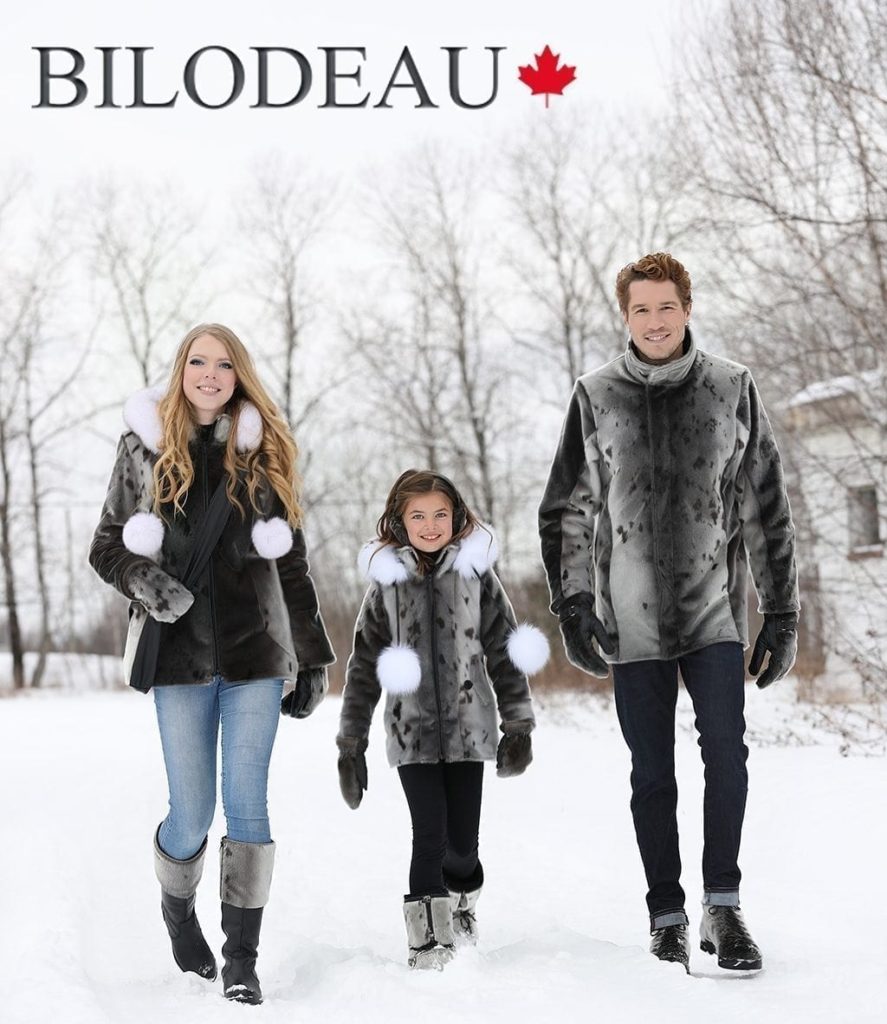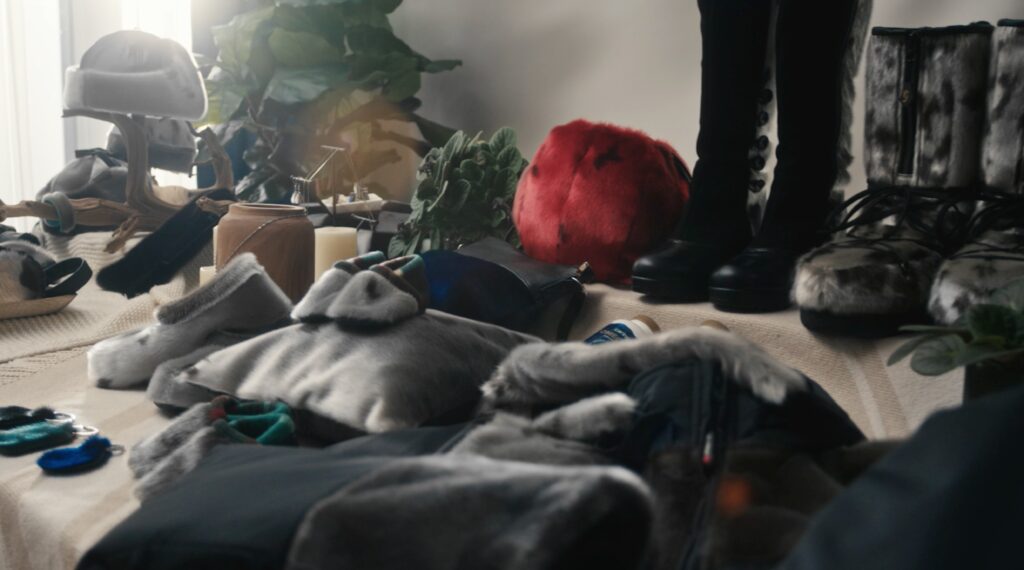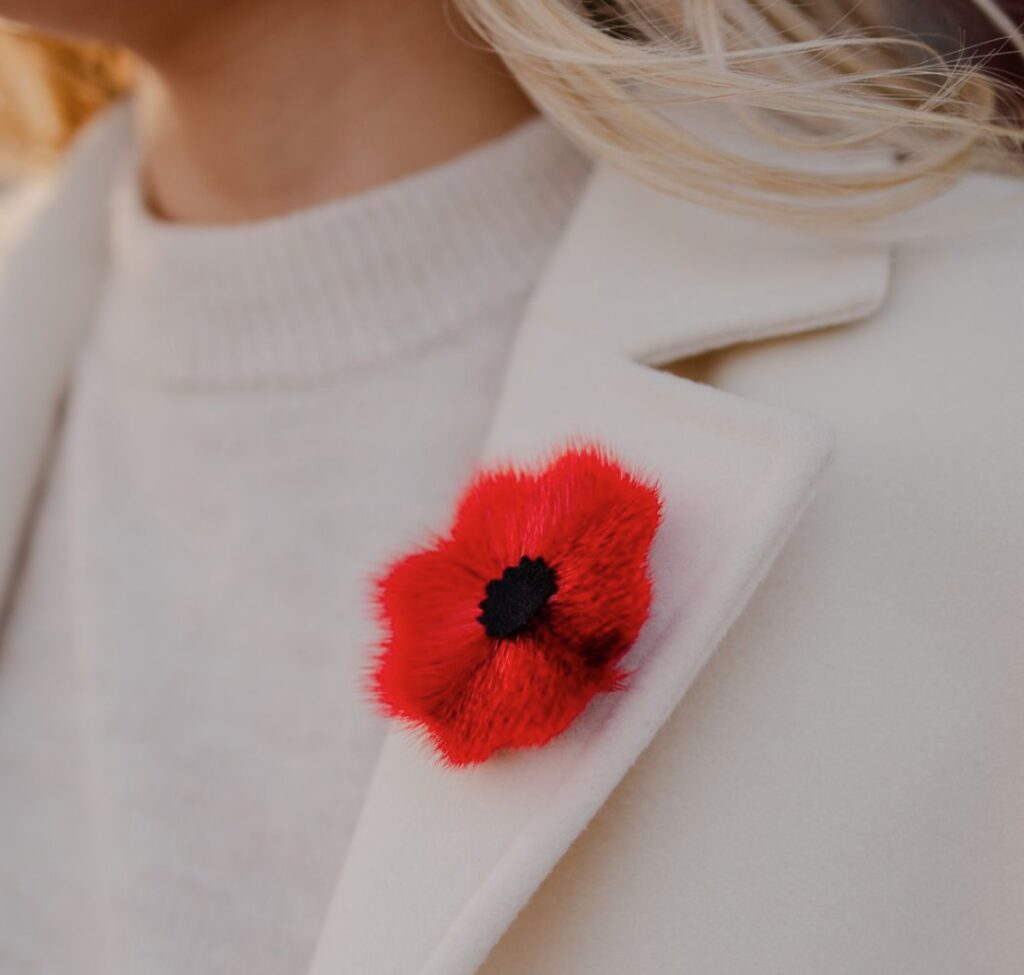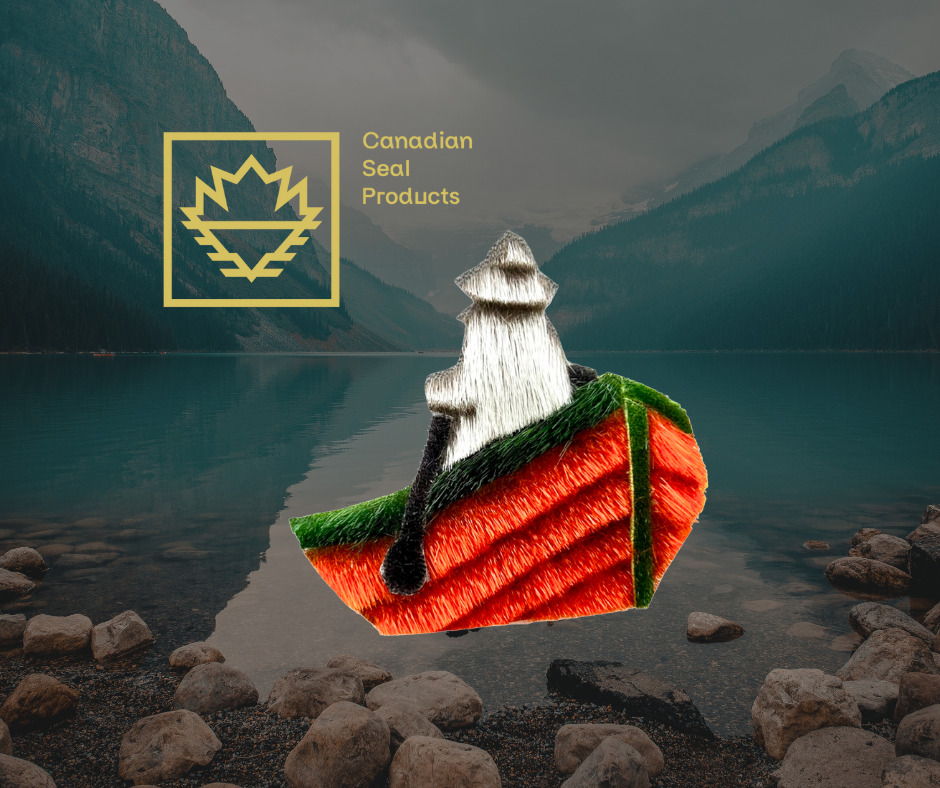by Stephanie J. Porter
Bilodeau Canada is driven by principles of sustainability and conservation—and a little Hollywood magic
Bilodeau Canada is run by lovers of nature and of fur.
That’s not surprising for a business that sells fur and leather garments and accessories—but it may be surprising just how far the company goes to ensure sustainable practices, full usage of the raw resource, and the fair treatment of both trappers and the animals they rely on for a living.
Bilodeau Canada was started 33 years ago by Mario Bilodeau. Mario learned to trap at a young age, and has a lifelong fascination with nature, hunting, fishing, trapping—everything outdoors.
At age 18 he picked up taxidermy as a hobby at home and, in 1985, opened a small shop in his hometown of Normandin, Quebec, population 3,000.
A reputation for creativity and quality
For the next 10 years, Mario focused on taxidermy. Slowly, though, clients started asking him to make mittens, hats, and clothing out of fur or leather. A request from a friend to create a pair of boots using fur was a game-changer—the boots were so well loved that he began making more.
Today, Mario’s nephew, 25-year-old Samuel Bilodeau, is the Chief Operating Officer of Bilodeau Canada (and an experienced trapper, hunter, and angler). The company employs 80 and has boutiques in Montreal, Quebec City, Normandin, and Vancouver; its products are sold in dozens of other stores across Canada. Those fur- and leather-based products include everything from home décor to baby blankets, handbags to headbands.
“The designs we make are fashionable, they are high-quality, and they are made sustainably,” says Samuel. “Boots are the biggest seller, especially seal. But we have a wide product range, and a wide range of clients.” The company recently received a commission for 500 muskrat hats made from the RCMP; the Montreal Police have also placed a large order.
The overseas market is strong as well. “I have clients from China who want to buy our products because they are made in Canada and Canada has a reputation for high quality.”
Hollywood calling
Bilodeau Canada has not left its roots behind: the taxidermy arm of the operation is alive and well and as exciting as its fashion arm. Eight taxidermists work full-time for the company, still based in Normandin.
“People come to us for hunting trophies or home collections,” says Bilodeau. “We also work with museums, the film industry, brokers—a wide range of clients.
“We are the biggest taxidermy shop in Quebec; we can do almost anything, and we can do it customized for you. Whatever you need, we can do it.”
Bilodeau’s taxidermy team has worked for films such as Night at the Museum, Taken, Grey Owl, The Mummy, and Assassin’s Creed. Some of the requests have been for props, masks, costumes, and accessories; others for mechanical animals, both realistic and fantastical.
“Sometimes we get weird demands,” admits Bilodeau. “But we like the challenge.”
Maximum usage of a natural resource
In recent years, the market for seal and other fur products has been steadily increasing. Quebec and Newfoundland have been huge markets for seal fashion items, but business has lately been improving in Manitoba, Alberta, and elsewhere. More and more products are selling through Bilodeau’s online storefront.
“We work hard to educate people,” says Bilodeau. “People who wear our products know that they are done well. We try to use every part of the animal, and don’t let anything go to waste.”
The pieces left from a seal pelt after the primary product is made, for example, are often used as lacing (in the case of seal, Bilodeau only receives the seal pelt; its supplier, though, has markets for meat and oil).
However, when a trapper brings a complete animal to Bilodeau Canada’s headquarters, the fur and leather is used to make clothing and accessories; bones, teeth, and claws are used for craft products or in cinema; oil and fat may be made into soaps or sold to the pharmaceutical industry; meat is often distributed to dog breeders. Even the hair that comes out when a fur is brushed is saved and turned into wool.
“We try to use every part of the animal, and then we can give the trapper back a better price,” Bilodeau says.
“We buy most of our wild fur from the trappers in Quebec,” he continues, “from the people we have known for a long time. This way we are sure that the fur is sustainably harvested and humanely trapped; the hunts are very well managed.”
Bilodeau is proud to say the largest market for the company’s products is his home province of Quebec.
“Buying local is important, this is who we are,” Bilodeau says, referring to the deep trapping traditions of the region. “And you need the people where you live, who work with you, to be happy to wear your products … They tell others that we are doing high-quality products—and everyone can see that they are beautiful.”



